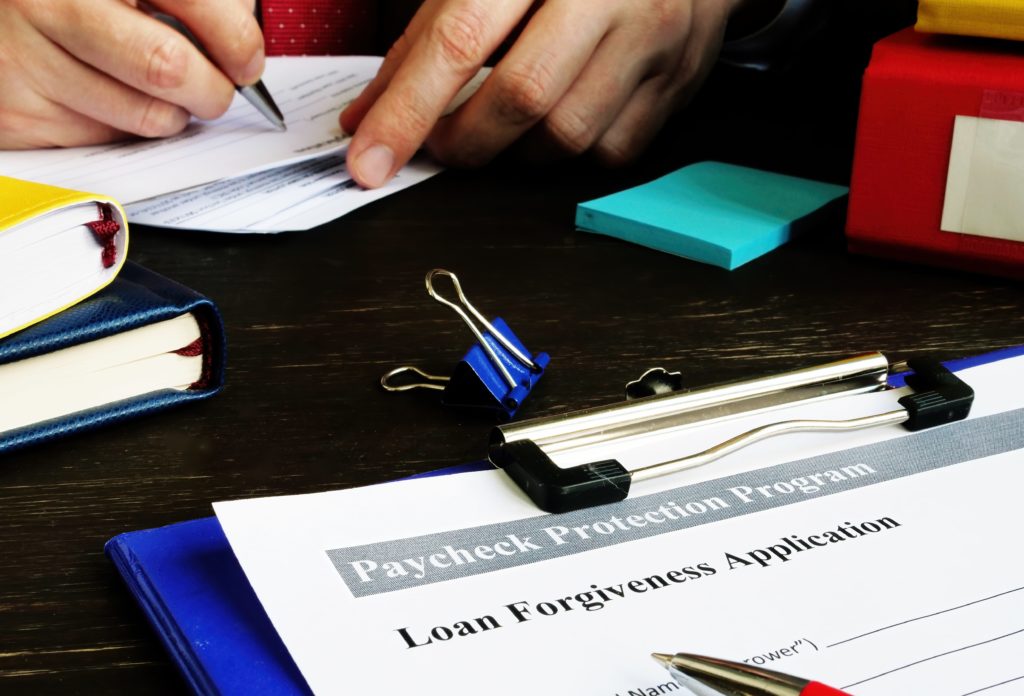If you’re a small-business owner, you’ve probably been affected by COVID-19 in one way or another. Because there have now been two rounds of funding for the Small Business Administration (SBA) loan programs, the Paycheck Protection Program (PPP) and the Economic Injury Disaster Loan (EIDL), totaling over $650 billion, you may have applied for and received some small-business relief by now. But there still seems to be some confusion about how these funds ought to be used, and the penalties for misusing them.
So we wanted to clear that up as best we can. When there are emergency government relief funds being offered, and the IRS and multiple other government agencies are involved, it’s important to follow the guidelines. You’ll want to adhere to them if you want your Paycheck Protection Program loan forgiven, which is possible for those who document their funds appropriately.
Remember that the PPP and EIDL are SBA PPP loans, the government’s response to COVID-19 enacted as a way to keep small businesses from going under during this difficult time. In other words, they’re not to be abused. Here are the ways you can have your SBA PPP loan forgiven.
More: [Non-SBA Small Business Coronavirus Relief Options]
Follow The Guidelines
When you were doing your research on the PPP initially (see ours here), most blogs and news sites had great information about what the funds must be used for. As a reminder, they are:
- Payroll costs (at least 60% of your loan, and up to $100K per employee)
- Continuation of group health care benefits during periods of paid sick, medical, or family leave
- State and local taxes on compensation
- Rent (including lease agreements) and mortgage interest
- Utilities
If you want your SBA Paycheck Protection Program loan forgiven, only use it for the nonexhaustive above purposes. With new guidance that has recently been released, it appears there will be more flexibility when calculating how much of the PPP funds were used on payroll. Please note that you must document every dollar allotted to you through your SBA PPP loans if you want to apply for forgiveness. More on that later.
Now we’ll have a look at things you can technically do with your funds but cannot have forgiven.
Two ‘Eligible’ Uses Of The PPP, But Without Forgiveness
- Making interest payments on debt accrued prior to February 15, 2020
If you have creditors asking for the money you owe them, you can use your SBA PPP loan to pay the interest on your other loans. The SBA lets you do this, just without forgiveness.
- Insurance premium payments
Similarly, if you have to pay your insurance premiums, that’s OK, but you won’t be able to get forgiveness.
However, still document paying these bills with your PPP funds, because when it does come time for forgiveness, the SBA will appreciate seeing that you were thorough with your bookkeeping. If you do have questions regarding how to use your SBA Paycheck Protection Program loan funds or about forgiveness, you can contact your local SBA Field Office.
More: [Small Business Relief Financing For COVID-19]
Nonpermitted Uses Of The PPP
These are the ways you certainly don’t want to use your PPP loan:
- To pay salaries over $100K
- For payroll outside the U.S.
- For employer federal, FICA tax credits
- For employer FFCRA credits
- For 1099s
- For mortgage or debt principal
What happens if you use all or even part of your PPP funds for these purposes? Unfortunately, not only will part of your SBA PPP loan not be forgiven, but you may also be subject to immediate payback and possible legal action. So be careful to avoid these mistakes!
Tracking Expenses
You’ll want to use your payroll provider, your own accounting software or tracking tools to record every financial transaction that you make using your PPP funding, even if it’s not a forgivable expense, like paying credit card debt. Please note the following for the SBA when it comes time to apply for forgiveness:
- The expense amount
- To whom you made the payment
- The category of the expense
- The date of the transaction
- The purpose of the transaction
Keeping official records of each transaction in the form of a paystub or receipt will go a long way when it’s time for forgiveness. You can even put “PPP” in the memo of your checks where applicable.
More: [How Can A Small Business Survive The Coronavirus?]
How To Apply For SBA Paycheck Protection Program Loan Forgiveness
An important detail to keep in mind about SBA PPP loan forgiveness is you have to apply. The CARES Act dictates that you must apply at the end of the 8- or 24-week period (depending on when you PPP loan was issued) following your loan disbursement. You’re required to submit the following, which might not be an exhaustive list, if you wish to receive forgiveness:
- The amount you’d like forgiven
- Verification of your business’s total number of full-time employee equivalents on payroll and their pay rates, including IRS tax filings and state income, payroll and unemployment insurance filings
- Verification of your payments on mortgage interest, rent and/or lease obligations and utilities
- Certification from an authorized representative of your company that all the information is correct and that the amount being asked for forgiveness conforms with PPP guidelines
You’ll want to err on the side of meticulousness when it comes to keeping track of all your SBA PPP loan expenses over the 8- or 24-week period. Our mantra to you is: “Track and document everything, even if you think you don’t need to.” You can also review the SBA PPP loan forgiveness application to see what exactly is required to apply for loan forgiveness.
If you think it might be a relevant and appropriate expense to document, do so. Even if you think it’s unnecessary, it’s better to be safe than sorry. You don’t want to have a seemingly small mistake be the downfall of your loan forgiveness.
No Such Thing As ‘Too Thorough’
Use your SBA PPP loans for their intended purpose, but also remember that you must track every expense. Always be thorough with your loans. Keep strict books and logs. You’d rather be too thorough than the alternative. There are certain things you really want to avoid using your SBA PPP loans for, like salary amounts over $100K, certain tax credits and certain employee types, including 1099s.
COVID-19 has already changed so much about how we do business and it’s difficult to say what changes we’ll see next, but we’ll be here, doing our part to keep you informed on the latest.
Here are some of our articles you may find helpful:
- How To Generate Income Online During COVID-19
- 8 Free Resources For Businesses Facing The Coronavirus
- In The Business Of Expecting The Unexpected
Please contact us if you have any questions. We’d love to help.


